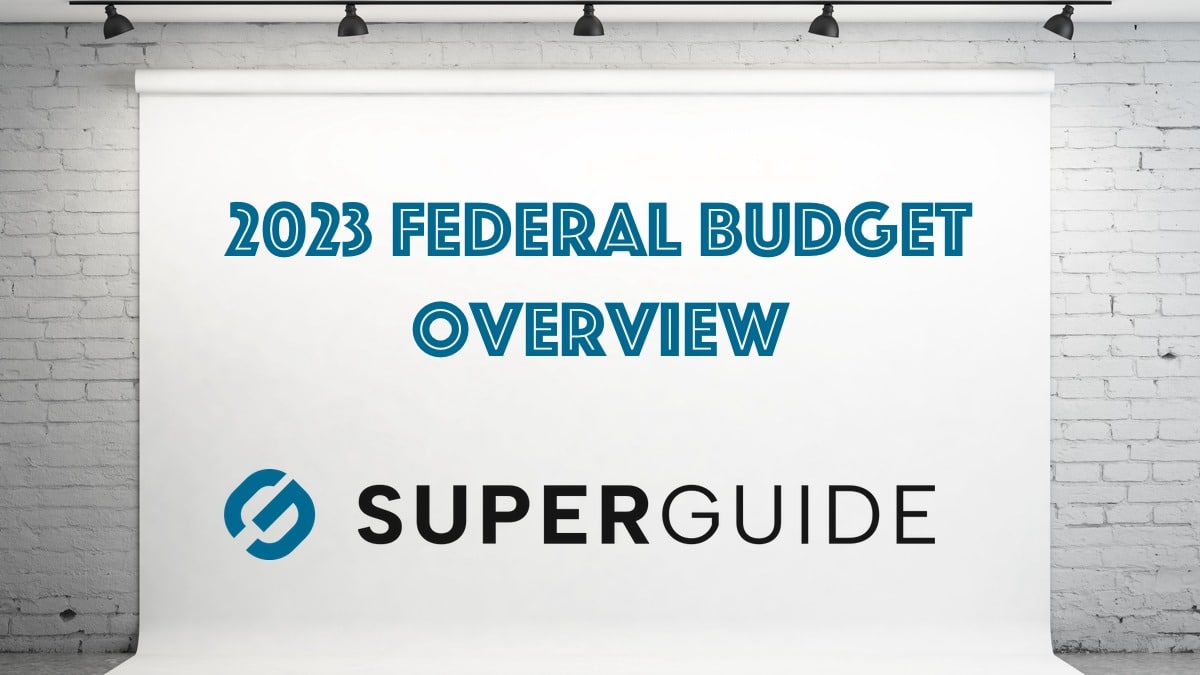The second Budget of the Albanese Government holds the line on fiscal discipline, while acknowledging the pain that many Australian households now face with mounting cost-of-living pressures. The Budget seeks to address the latter issue directly with a relief package of almost $15 billion, spearheaded by its Energy Price Relief Plan.
Budget outlook and key forecasts
Since the October 2022 mini-budget, the Commonwealth Government has enjoyed a receipts tailwind provided by a strong labour market and elevated commodity prices. These have combined to now deliver a surprise expected cash surplus of $4.2 billion for the 2022–23 financial year, followed by a deficit of $13.9 billion for 2023–24.
The outlook for inflation is unfortunately less rosy, with the Consumer Price Index (CPI) forecast to stay at a stubbornly high 6% for 2022–23, falling to 3.25% for 2023–24. Inflation is now not forecast to fall back into the RBA’s preferred 2–3% per year band before 2024–25.
With real wages forecast to fall 2.25% this financial year, this budget’s focus is very much on alleviating cost-of-living pressures, with many of the key budget measures aimed at providing assistance to counteract the effects of rising household living costs.
The following are the key announcements contained within the Budget papers that affect superannuation and retirees as well as announcements on cost-of-living pressures.
SUPERANNUATION ANNOUNCEMENTS
Confirmation of higher tax on balances of $3 million or more
The Budget confirms the announcement first made on 28 February this year, that tax concessions available to individuals with a total superannuation balance (TSB) exceeding $3 million will be reduced from 1 July 2025.
This ‘Better Targeted Superannuation Concessions’ measure will bring the headline tax rate for impacted individuals to 30%, up from 15%, for earnings corresponding to the proportion of an individual’s TSB that is greater than $3 million.
The budget papers indicate that the additional tax will impact some 80,000 individuals in 2025–26, or approximately 0.5% of individuals with a superannuation account.
Those who may be impacted by this proposed new tax may need to start considering the totality of their retirement planning options, including the use of non-superannuation vehicles such as family trusts.
End of reduced minimum pension drawdown rate
As was scheduled, the government will allow the temporary halving of the minimum account-based pension (ABP) drawdown rates to lapse on 30 June, reverting to pre-COVID levels from 1 July 2023.
The minimum drawdown percentages were reduced by 50% in the 2020 Budget to allow retirees to better manage their affairs in light of the pandemic, but the normalisation of financial conditions since has negated the need for this relief measure to continue.
Retirees, particularly those running account-based pensions in their SMSFs, may need to revisit their investment strategies to ensure that there are sufficient cashflows, or liquid assets, to facilitate the higher drawings for the 2023–24 financial year.
Paying Super Guarantee with wages
Another budget measure that was widely telegraphed prior is confirmation that from 1 July 2026 employers will be required to pay their employees’ SG liabilities on the same day that they pay salary and wages.
Increased frequency of SG payment will assist in improving retirement outcomes, both by these concessional contributions being in the system sooner and by the greater visibility employees will have over their SG contributions.
The commencement date of 1 July 2026 was selected to allow the ATO, payroll service providers and superannuation funds time to make necessary system changes, and for employers to adjust their cashflow management practices.
Amending measures relating to non-arm’s-length income (NALI)
The Government will amend measures announced by the previous government in relation to non-arm’s-length income (NALI) incurred by certain superannuation funds.
This NALI amendment will limit the income of SMSFs and small APRA-regulated super funds that are taxable as NALI to twice the level of the general expense. Fund income taxable as NALI will also exclude contributions under the amendment.
Importantly for SMSF trustees, expenditure that occurred prior to the 2018–19 income year will also be exempted.
Additional funding for superannuation consumer advocacy
The Budget also provides $5 million over five years, from 2023–24 onwards, to continue funding for Super Consumers Australia, a consumer advocacy organisation that provides Australians with information on super matters to improve member outcomes.
The funding will be offset by an increase in the Superannuation Supervisory Levy administered by the super regulator APRA.
ANNOUNCEMENTS AFFECTING OLDER AUSTRALIANS
Change to JobSeeker payment rate for older Australians
The Budget introduces a measure to assist Australians aged between 55 and 60 who are currently on the JobSeeker income support payment.
In an acknowledgement that there may be structural impediments to older Australians re-engaging with the workforce, the Budget extends the existing higher rate of JobSeeker to recipients 55 and over who have received the payment for nine or more consecutive months. Currently this higher rate applies only to recipients who are 60 and over.
It is expected that this increase in JobSeeker for eligible recipients aged 55 and over will benefit some 52,000 individuals, disproportionately female, who will receive an increase in their base rate payment of $92.10 per fortnight.
Additional funding for Home Care packages
In a move to assist more senior Australians to remain in their homes as they age, the Government is committing $166.8 million to provide an additional 9,500 home care packages.
This increased preference among senior Australians to ‘age in place’ is also reflected in a temporary reduction in the residential aged care provision ratio, from 78.0 places to 60.1 places per 1,000 people aged 70 years or older.
The Government will also provide $487 million to extend, and make ongoing, the Disability Support for Older Australian Program, which provides support to vulnerable older people with a disability.
ANNOUNCEMENTS ON COST-OF-LIVING PRESSURES
Relief from rising energy bills
As announced in the days leading up to the Budget, the Government is setting aside $14.6 billon over the next four years to help alleviate cost-of-living pressures that have continued to escalate over the past year.
Acknowledging the impact of the ongoing conflict in Ukraine on household energy bills, the Government has announced an ‘Energy Price Relief Plan’ that will deliver up to $500 in a one-off electricity bill relief measure for eligible households, and up to $650 for eligible small businesses. It is expected that up to 5 million households may be eligible for this energy bill relief, together with 1 million small businesses.
As this program involves the state and territory governments, the amount of relief received will be dependent on your circumstances, where you live and the pricing arrangements of that particular state or territory.
In addition, the Government will inject $1 billion, via the Clean Energy Finance Corporation, to facilitate some 110,000 low-interest loans (in partnership with private lenders) to households wishing to upgrade the energy efficiency of their homes.
Reducing out-of-pocket health expenses
The Budget injects some $3.5 billion over the next five years to strengthen the Medicare system. This funding will go, among other things, towards increasing the incentives for GPs to bulk bill for a range of common consultations, whether done face-to-face, via telehealth or videoconference.
The measure will apply to consultations to children under the age of 16, pensioners and other Commonwealth concession card holders, allowing them to access more GP services without the need for out-of-pocket payments. It is forecast to benefit 5.1 million children under the age of 16, and 7.9 million Commonwealth concession card holders.
The Budget also confirms the pre-announcement to double (up to two months) the length of time for which scripts can be issued (for stable, chronic health conditions), reducing the number of GP and pharmacy visits for eligible individuals. It will apply to some 300 medicines currently on the Pharmaceutical Benefits Scheme.
This measure may save concession card holders up to $43.80 per year per eligible medicine.



Leave a comment
You must be a SuperGuide member and logged in to add a comment or question.